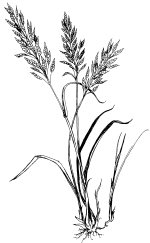
Wildlife Corridor
Prairie Creek Wildlife Management Area is one of many areas devoted to conservation in Rice County.
The Koester Prairie site can be seen in the northern section of the map. The southwest of the map shows scientific and natural areas bordering Prairie Creek itself. These segments finally join Nerstrand Big Woods State Park.
These varied habitats, along with Prairie Creek, form a "wildlife corridor" by creating interconnected spaces that allow bird and animal species to flourish.
One benefit of creating a wildlife corridor is it will create more prairie land in Minnesota which will in turn increase biodiversity. It will also preserve natural landscapes which is crucial as Minnesota continues to urbanize. Finally, a wildlife corridor will connect Prairie Creek to other wilderness areas, such as Big Woods State Park.
But there are pros and cons to wildlife corridors.

Conservation areas in Prairie Creek in 2015, by Melissa Driscoll of the DNR.

Conservation areas in Prairie Creek in 2015, by Melissa Driscoll of the DNR.
Pros
1. Corridors allow native species, such as the prairie vole, to travel between fragmented natural areas.
2. They increase genetic diversity of native species.
3. They accommodate the migration tendencies of species such as many birds
4. Corridors expand the habitats of native species.
5. They expand the size of wilderness areas, allowing for more recreational use.
Cons
1. There is a potential to spread invasive species by introducing them to previously isolated habitats. One specific invasive species which can easily spread is garlic mustard.
2. Corridors may introduce new predators to a system. For example, coyotes may move easily to new ecosystems and prey on deer populations.
3. Corridors are expensive and time-consuming to construct.


